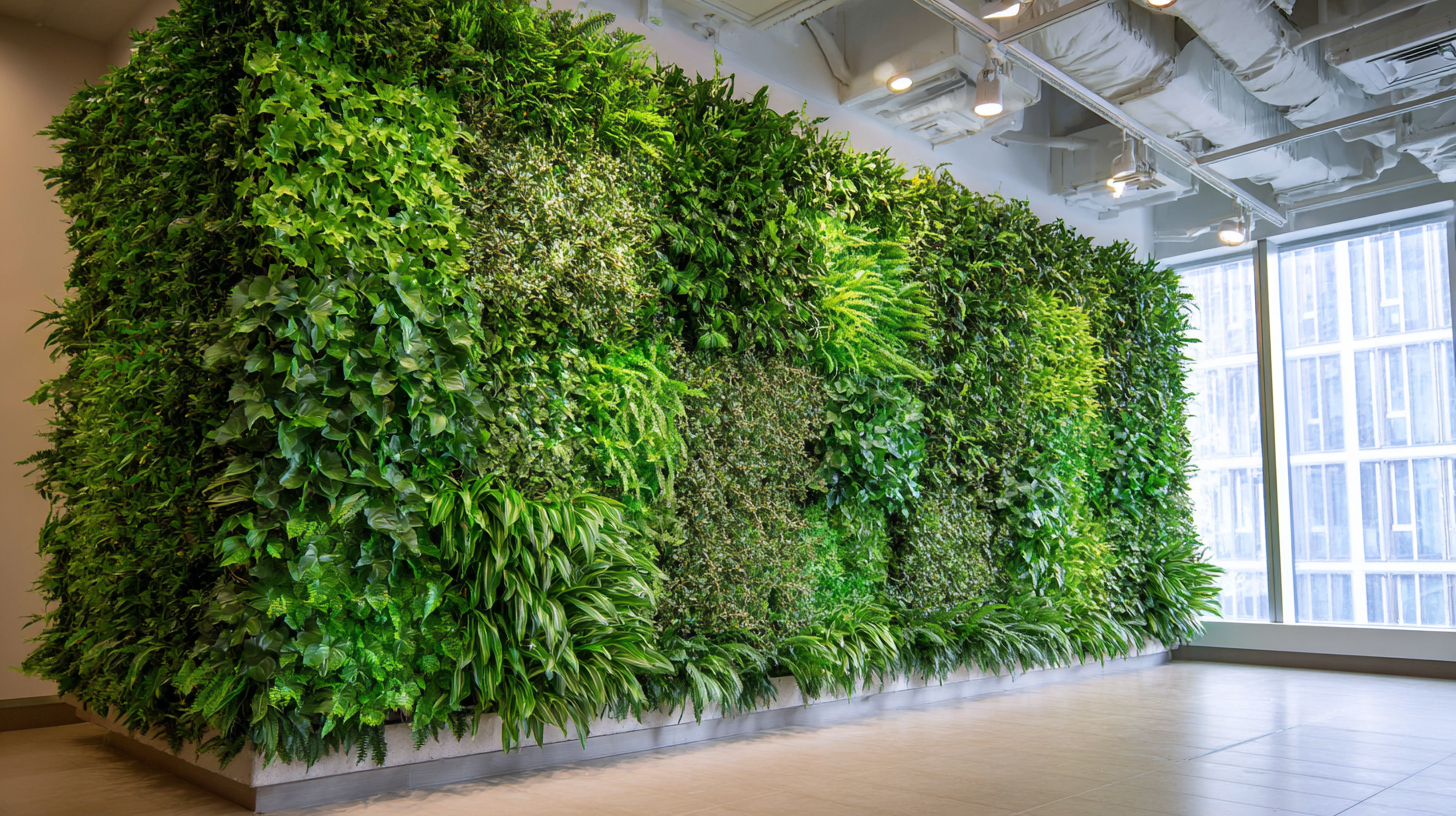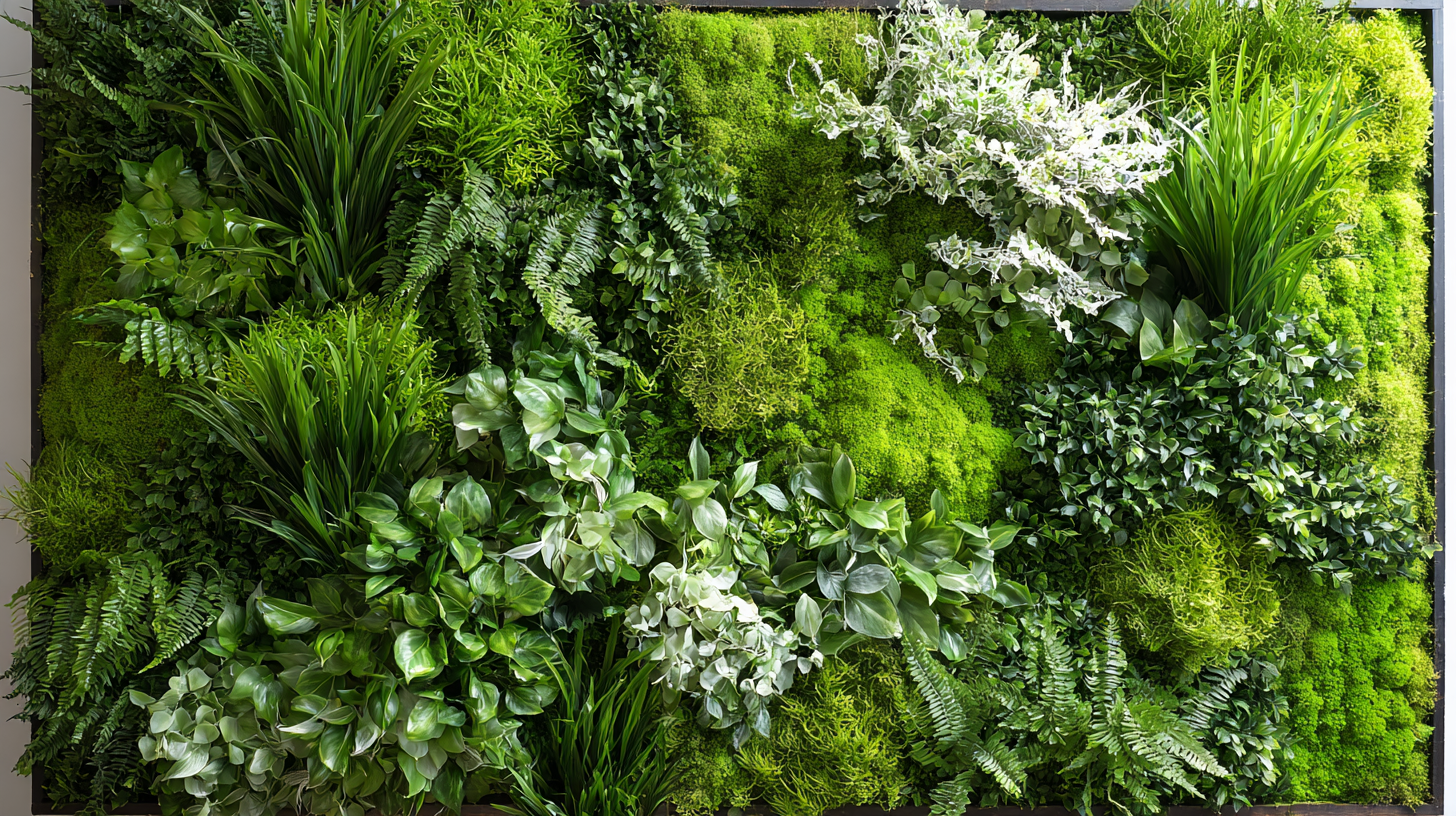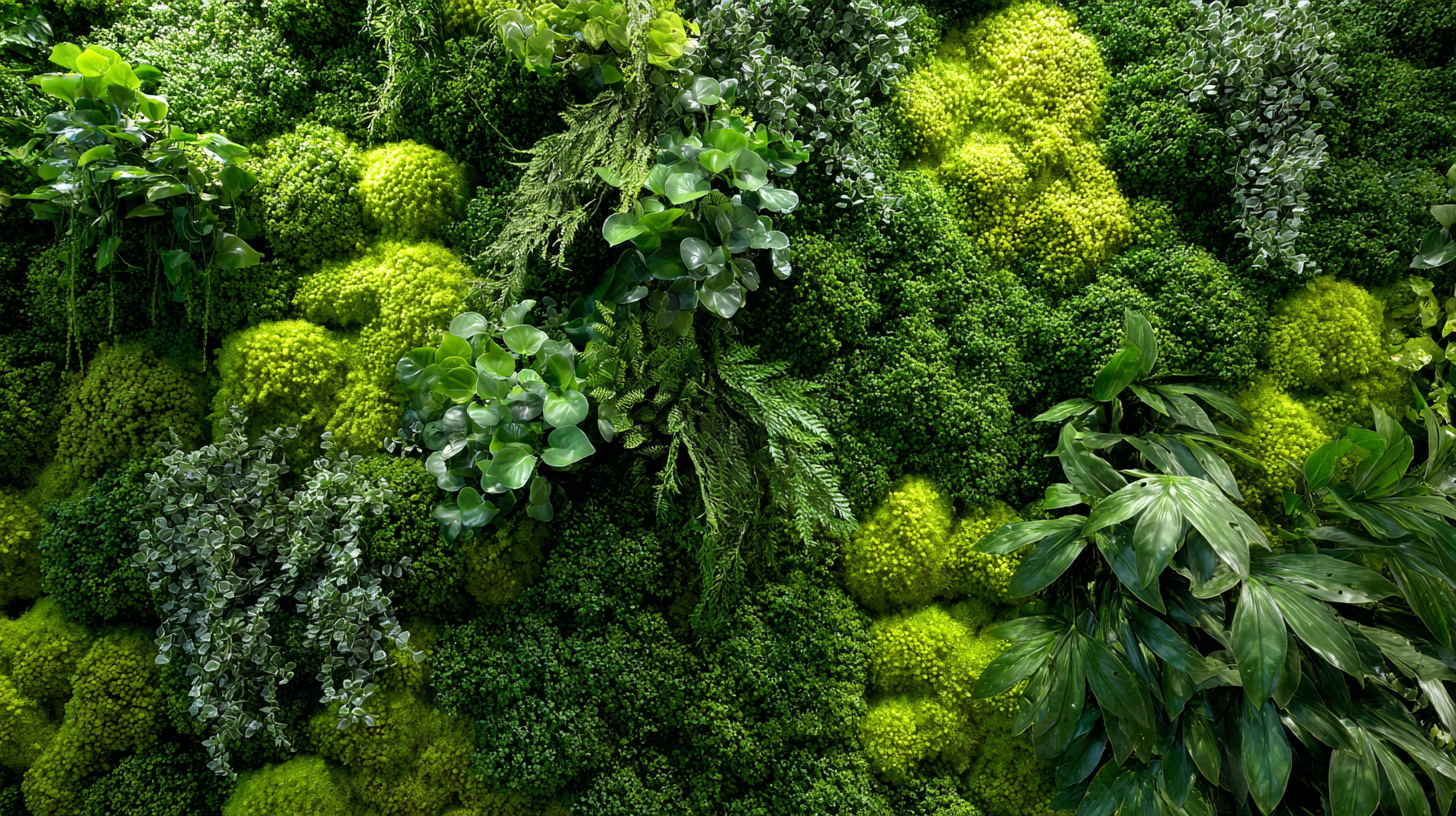In recent years, the integration of nature into urban environments has gained significant momentum, leading to the rise of innovative solutions such as Artificial Green Wall Panels. According to a report by Grand View Research, the global green walls market is projected to reach USD 1.3 billion by 2027, indicating a growing recognition of their aesthetic and environmental benefits. These panels not only enhance the visual appeal of modern spaces but also contribute to improved air quality and reduced urban heat. Furthermore, a study by the University of Washington highlights that spaces adorned with greenery can enhance employee productivity by up to 15%. With their versatile applications in both residential and commercial settings, Artificial Green Wall Panels are becoming an essential feature for architects and designers aiming to create inviting, sustainable interiors.

The rise of artificial green wall panels in contemporary design reflects a growing trend towards integrating nature into urban environments. As cities become more crowded and concrete-dominated, these innovative installations not only beautify spaces but also provide numerous environmental benefits. By acting as natural air filters, artificial green walls can improve indoor air quality, while their visual appeal enhances aesthetic values in both residential and commercial buildings.
Moreover, the incorporation of artificial green wall panels aligns seamlessly with other sustainable practices, such as installing grow lights for indoor gardening. Full-spectrum LED grow lights can support the growth of various plants, from seedlings to succulents, allowing these green walls to be vibrant and thriving year-round. This synergy between artificial greenery and advanced lighting technology paves the way for modern homes to embrace a greener, more sustainable lifestyle, ultimately transforming how we experience and interact with our living spaces.
 The rising trend of artificial green wall panels is transforming modern spaces, infusing them with an extraordinary visual appeal. Unlike traditional wall decorations, these panels mimic the beauty of living plants without the maintenance hassles. They bring a lush greenery effect indoors and enhance the aesthetic charm of both residential and commercial environments. With a myriad of designs, colors, and textures available, artificial green walls can be tailored to suit any style, creating a stunning focal point that captures attention and elevates the overall ambiance.
The rising trend of artificial green wall panels is transforming modern spaces, infusing them with an extraordinary visual appeal. Unlike traditional wall decorations, these panels mimic the beauty of living plants without the maintenance hassles. They bring a lush greenery effect indoors and enhance the aesthetic charm of both residential and commercial environments. With a myriad of designs, colors, and textures available, artificial green walls can be tailored to suit any style, creating a stunning focal point that captures attention and elevates the overall ambiance.
Additionally, these green walls serve as a versatile backdrop, perfect for contemporary art pieces, modern furniture, or even corporate branding. Their unique texture adds depth to any environment, making it feel more inviting and dynamic. By incorporating artificial green wall panels, homeowners and businesses alike can create a serene oasis within urban settings, encouraging relaxation and creativity. The visual impact of these installations is undeniable, turning ordinary spaces into extraordinary experiences that resonate with modern aesthetics and sustainable practices.
 Artificial green wall panels are becoming increasingly popular for modern spaces due to their maintenance advantages over traditional living walls. According to a recent industry report by Green Building Solutions, artificial green walls require significantly less care, with maintenance costs decreasing by up to 70% compared to real plants. This is particularly beneficial for commercial spaces where minimizing upkeep can lead to substantial savings in both time and money.
Artificial green wall panels are becoming increasingly popular for modern spaces due to their maintenance advantages over traditional living walls. According to a recent industry report by Green Building Solutions, artificial green walls require significantly less care, with maintenance costs decreasing by up to 70% compared to real plants. This is particularly beneficial for commercial spaces where minimizing upkeep can lead to substantial savings in both time and money.
When opting for artificial green walls, it's essential to consider the quality of materials used. High-quality synthetic panels can mimic the lush appearance of live plants while eliminating the need for watering, sunlight, and ongoing pruning. Tips for selecting the right panels include checking for UV resistance and easy-to-clean surfaces, which can aid in maintaining the wall's vibrant look over time without extensive effort.
Additionally, integrating artificial green walls can enhance the aesthetic appeal of any space while improving air quality. The International Journal of Environmental Research published a study indicating that incorporating greenery, whether real or artificial, can reduce stress and enhance productivity in work environments. Therefore, choosing artificial options can provide the visual benefits without the labor-intensive demands of living plants.
Artificial green wall panels not only add aesthetic appeal to modern spaces but also play a significant role in enhancing indoor air quality. These innovative solutions are designed to mimic the natural processes of real plants, effectively filtering pollutants and toxins from the air. Unlike traditional plants, artificial green walls require no sunlight or special care, making them an ideal choice for urban environments where natural greenery might be scarce. With enhanced materials that purify the air, they contribute to a healthier indoor atmosphere by trapping dust, absorbing VOCs (volatile organic compounds), and reducing overall allergens.
The benefits extend beyond air quality improvement; artificial green walls also create a more tranquil and inviting atmosphere. By incorporating these panels into offices, homes, and public spaces, individuals can experience reduced stress levels and improved mental well-being. Additionally, the use of such panels can contribute to LEED (Leadership in Energy and Environmental Design) certifications, making them an environmentally friendly option for businesses looking to enhance their sustainability efforts while providing a visually appealing and health-promoting environment.
Artificial green wall panels offer a sustainable and cost-effective solution for modern spaces, making them an appealing choice for environmentally-conscious design. Unlike traditional vertical gardens, which require extensive maintenance and specialist care, these panels reduce the need for extensive resources like water and electricity. Made from durable, weather-resistant materials, they can be used both indoors and outdoors, providing a lush, green aesthetic without the high upkeep typically associated with living plants. This makes them an ideal choice for businesses looking to enhance their environments while adhering to sustainability principles.
Investing in green walls also presents long-term financial benefits. The initial outlay for artificial panels can be higher than traditional décor options, but the savings on maintenance, water, and energy usage can quickly offset this cost. Furthermore, green walls contribute to improved air quality and employee wellness, often leading to increased productivity and reduced healthcare costs over time. By prioritizing green solutions, businesses not only create inviting spaces but also demonstrate their commitment to sustainability, aligning with the values of eco-conscious consumers and employees alike.
| Benefit | Description | Sustainability Factor | Cost-Effectiveness Rating |
|---|---|---|---|
| Aesthetic Appeal | Enhances the visual aspect of indoor and outdoor spaces. | High | 4/5 |
| Air Quality Improvement | Plants help filter and purify the air. | Very High | 5/5 |
| Insulation Properties | Helps regulate temperatures in buildings. | Moderate | 4/5 |
| Noise Reduction | Reduces noise levels in urban environments. | High | 3/5 |
| Increased Biodiversity | Supports a habitat for different species. | Very High | 5/5 |






